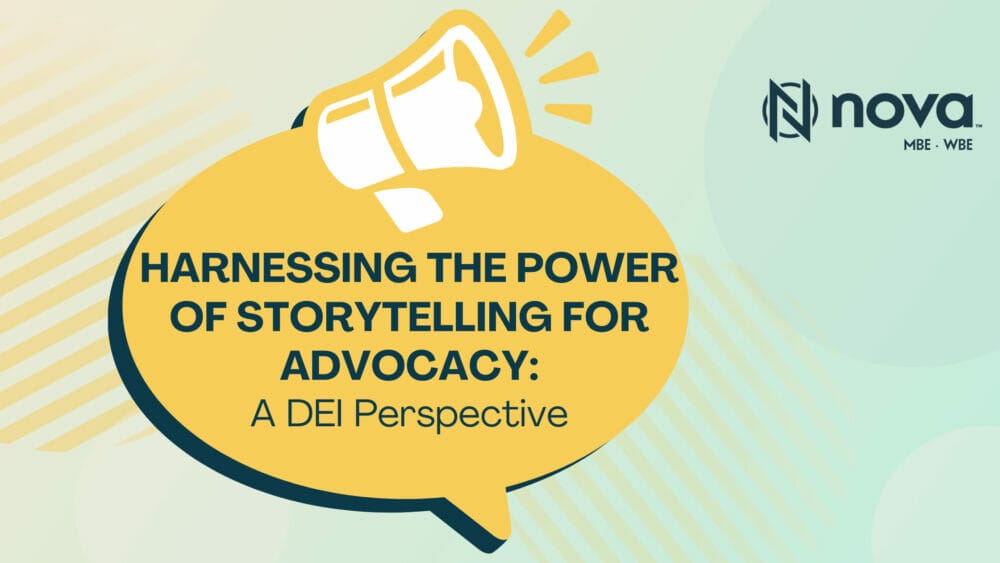In an interconnected world, advocating for diversity, equity, and inclusion (DEI) has never been more critical. Storytelling holds immense potential to serve as a powerful tool for advancing the impact of DEI. By sharing personal stories and narratives, individuals can not only advocate for themselves but also uplift others who are often marginalized or unheard.
Below are 5 ways you can effectively use storytelling to champion DEI and create a more inclusive and equitable workplace, community, and society.
1. Understand the Impact of Stories
Stories are an integral part of human culture. They shape our perceptions, beliefs, and attitudes. When it comes to DEI, stories have the power to humanize experiences, break down barriers, and foster compassion. By sharing your personal experiences or helping to amplify those of others, you can challenge stereotypes, debunk myths, and create a sense of connection that transcends differences. Make time at the start of your meetings to really connect with the people you work with, and be open to expanding your worldview and the narratives you’re exposed to. Use prompts like “what are you reading or listening to right now?” before jumping into your work for the day. It doesn’t take a lot of time but it can have a huge impact.
2. Embrace Your Authentic Narrative
To effectively advocate through storytelling, start by embracing your own authentic narrative. Your unique experiences, challenges, and triumphs offer valuable insights that can educate and inspire others. Share your personal journey with colleagues and give them the opportunity to share their own. Authenticity lends credibility to your advocacy efforts and encourages others to do the same.
3. Amplify Underrepresented Voices
Storytelling becomes a powerful tool when it is used to amplify the voices of those who have been historically marginalized. Actively seek out and promote stories from individuals and communities that are often overlooked or underrepresented. Everyone has a sphere of influence, and by leveraging that you contribute to a more inclusive narrative and a broader understanding of the multitude of stories that exist.
4. Create Connection
One of the most remarkable aspects of storytelling is its ability to evoke emotions and foster connections. Sharing stories about things in your life that have made an impact – or about moments when you made mistakes and what you learned from them – gives your colleagues insight into experiences that are different from theirs and invites them to do the same. This compassionate connection can be a catalyst for change, prompting individuals to question their biases, challenge stereotypes, and ultimately work towards a more inclusive society.
5. Tailor Your Message for Impact
To advocate effectively, it’s important to tailor your storytelling approach to your audience. Whether you’re speaking to coworkers, friends, or the broader community, consider what resonates with them and how your story can drive home the importance of DEI.
In the pursuit of a more equitable and inclusive world, storytelling is a powerful tool for advocacy. By embracing your authentic narrative, amplifying underrepresented voices, and fostering connections, you can effectively use storytelling to advocate for yourself and others in the realm of diversity, equity, and inclusion. Remember that every story has the potential to challenge perceptions, ignite conversations, and inspire positive change.

